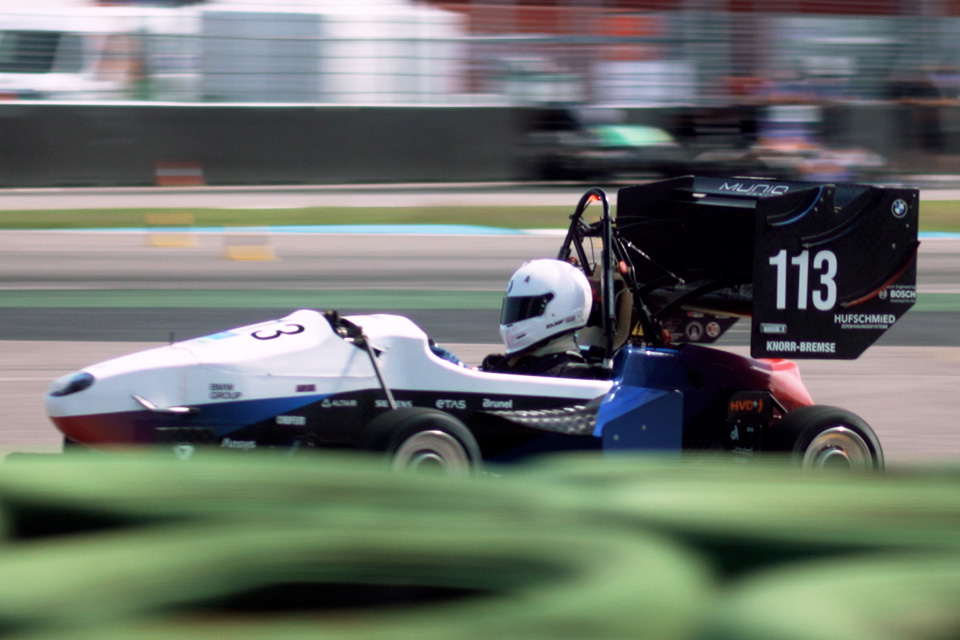The SAE Racing Team from Munich University of Applied Sciences, which takes part in the Formula Student racing series, has once again designed and built an impressive racing car from scratch this year. We had the opportunity to accompany Niklas Rösler and his team at the biggest Formula Student event at the Hockenheimring and gain an insight into the world of racing and technology.
The munichmotorsport team, consisting of around 40 students from various disciplines at Munich University of Applied Sciences, brings together expertise from fields such as automotive engineering, electrical engineering, mechanical engineering, business administration, design and marketing. In one of the largest engineering competitions in the world, they compete against around 100 other teams not only on the race track, but also in disciplines such as business planning and cost calculation.
3D printing is a key aspect in the development of the all-electric racing car.
“3D printing offers the best prototyping platform for us to manufacture, our housings and brackets built into the car”, explains Niklas Rösler. The engineering student was in charge of the car’s high-voltage system this year.
Most of the parts required are one-offs that would be difficult or costly to produce conventionally.
“SLS 3D printing is the most suitable prototyping technology for our racing team. We can use it in almost every situation around the car”, Rösler notes.
A key material in the 3D printing process is PA12, used on the Sintratec S3. Rösler has developed a housing made from this material that stabilizes the battery cells in the rear and ensures a firm hold even with rapid load changes and three-dimensional forces. The high dielectric strength of PA12 is particularly important for use in electric vehicles. PA12 spacers are also used to cool the system.
“The PA12 material from Sintratec covers most areas of application in the race car. It offers the best mechanical properties for our purposes and high dielectric strength”, Rösler says.
The race weekend was exhausting for the team, but successful. Despite technical problems at the beginning, the team achieved good results in the autocross and also collected many points in the static disciplines. In the overall standings, they came 20th out of 71 teams in the electric class.
“We are very proud of the performance and the design of the car, and above all, of what we have achieved and accomplished as a team in the past year,” Rösler sums up.
The experiences and successes show the potential and importance of 3D printing in modern racing. The team at Munich University of Applied Sciences plans to continue to rely on this innovative technology in the future in order to continue to innovate and improve in the field of racing.
Subscribe to our Newsletter
3DPresso is a weekly newsletter that links to the most exciting global stories from the 3D printing and additive manufacturing industry.


























